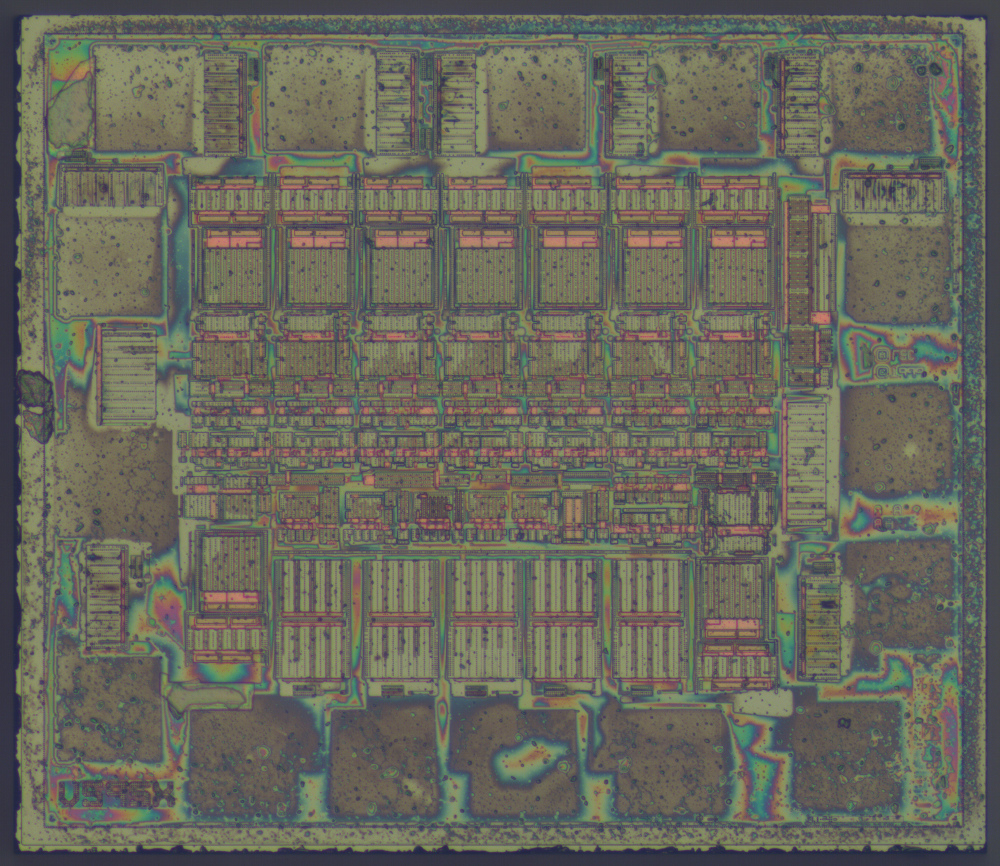November 4, 2013
LM2940L 1A LDO regulator : weekend die-shot
UTC LM2940L-5.0 - 1A low-dropout linear regulator.Apparently 5 contacts at the bottom-right were used to fine-tune output voltage by burning fuses between them.
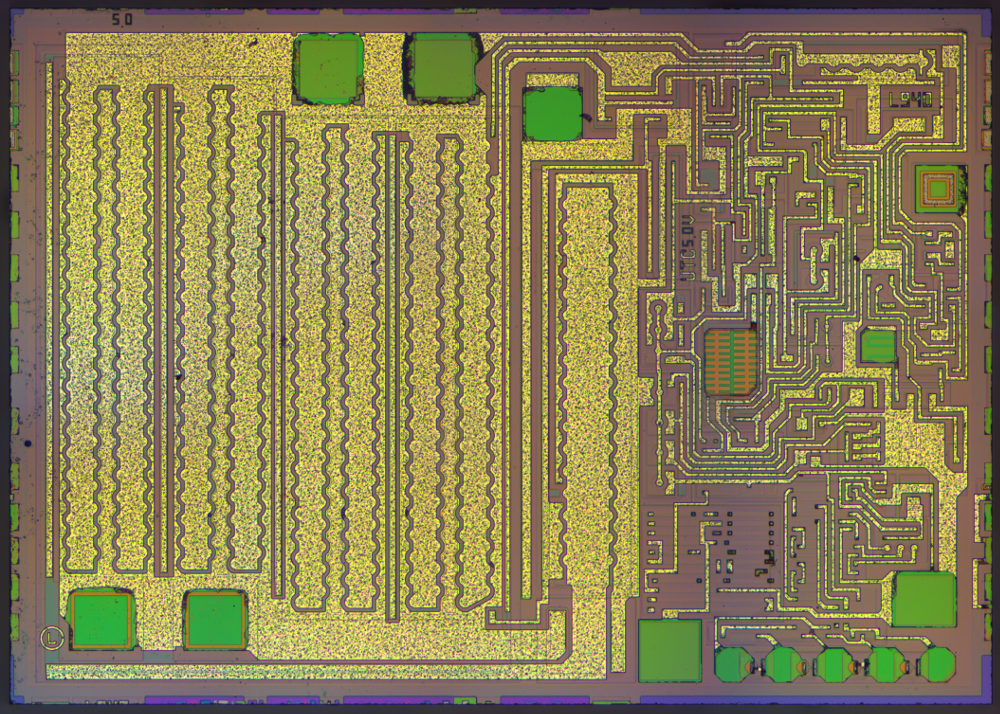
October 29, 2013
KR1858VM3 - last soviet Z80 : weekend die-shot
KR1858VM3 - is the lastWhile previous soviet Z80 were NMOS ones, this is 2µm CMOS. But due to "relaxed" layout (in addition to intrinsic lower logic density in CMOS) die size is even larger than 4µm NMOS variant KR1858VM1.
Die size 5050x4657 µm.
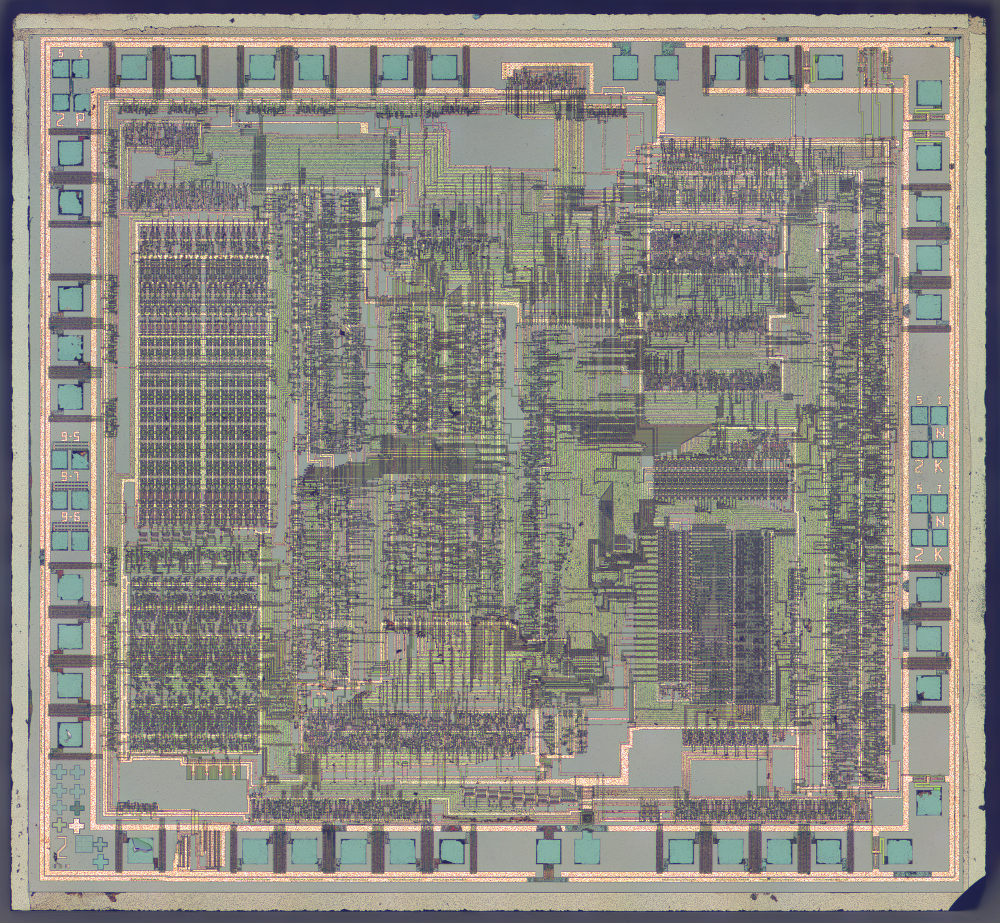
October 6, 2013
KR1858VM1 - soviet Z80 : weekend die-shot
KR1858VM1 - Z80-compatible CPU, manufactured in USSR. Die marking "U880/6" suggests that it was also designed in east Germany company VEB Mikroelektronik "Karl Marx" in Erfurt (MME). Compared to T34VM1 die size is shrunk by a factor of 1.6, reworked IO.Also, you can compare it to MME Z80A and Zilog Z80.
Die size 3601x3409 µm.
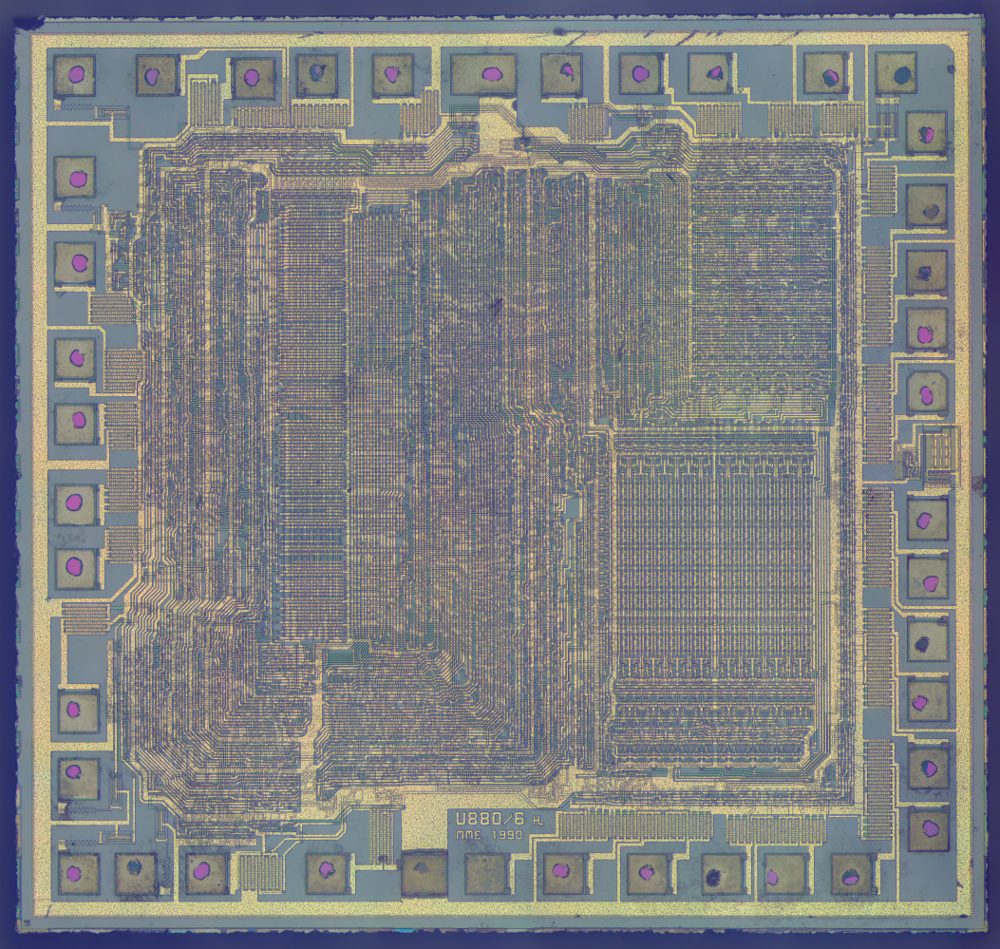
October 5, 2013
Fairchild 74F109PC - dual JK flip-flop : weekend die-shot
Fairchild 74F109PC - dual JK flip-flop, part of fastest bipolar 7400 TTL family - F.Die size 1436x1255 µm.
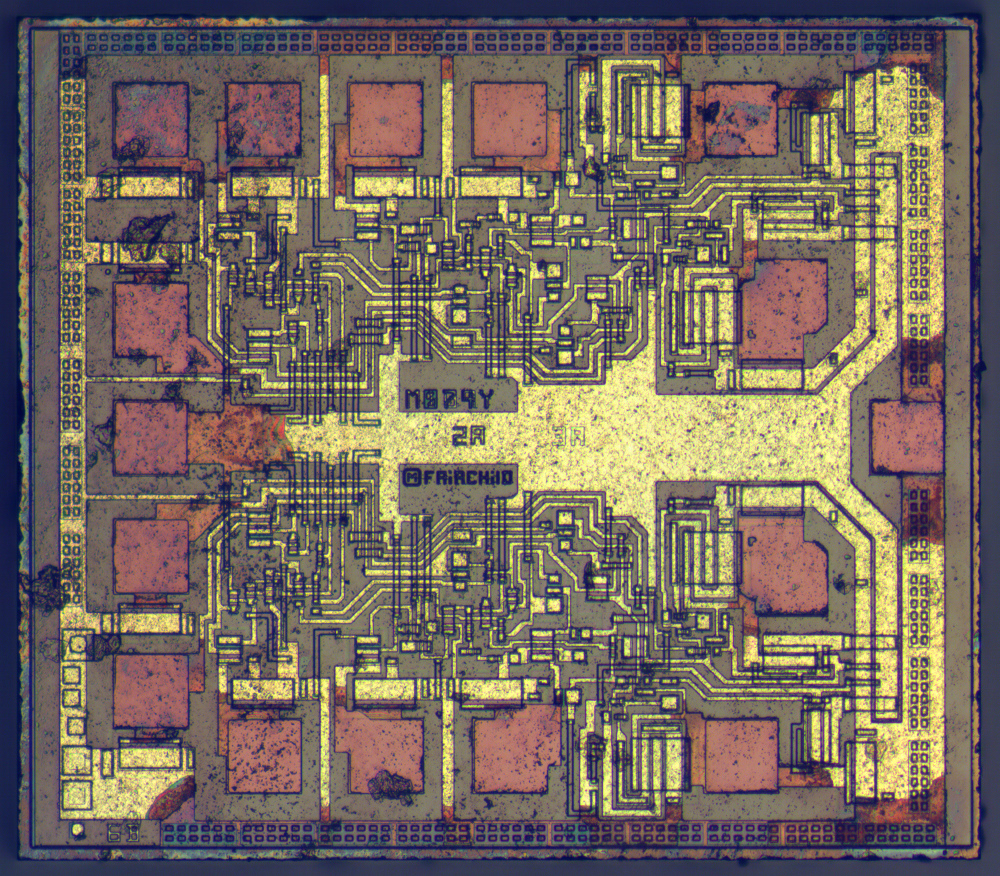
September 16, 2013
Playstation 1 - MIPS R3051 CPU : weekend die-shot
Playstation 1 CPU - CXD8530CQ based on 33.8688 MHz MIPS R3051 core manufactured at 800nm technology, 3 layers of metalization.CPU designed by LSI Logic Corp. Die size 8.15x8.1 mm.
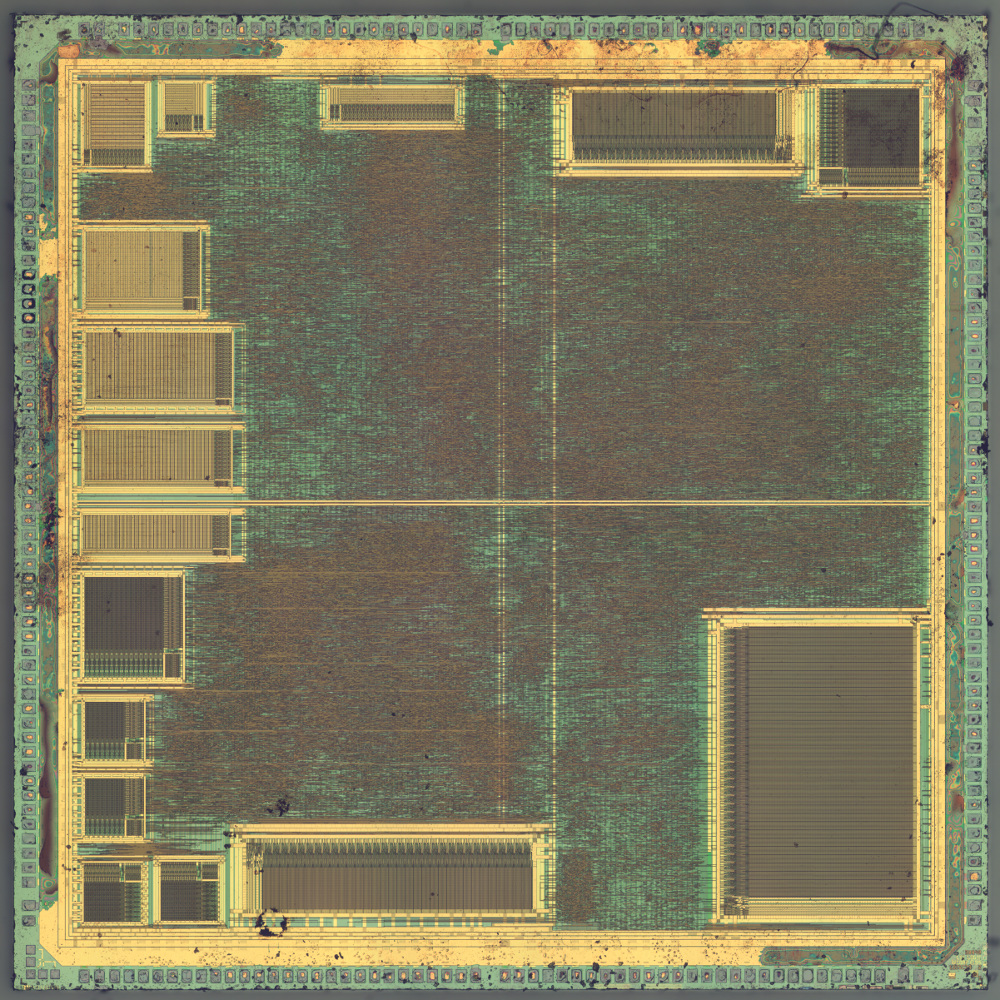
Read more →
September 15, 2013
NXP 74HC595 : weekend die-shot
NXP 74HC595 - yet another standard logic shift register. You may compare it to Fairchild 74VHC595 and OnSemi 74HC595.Die size 953x866 µm, 2µm manufacturing technology.
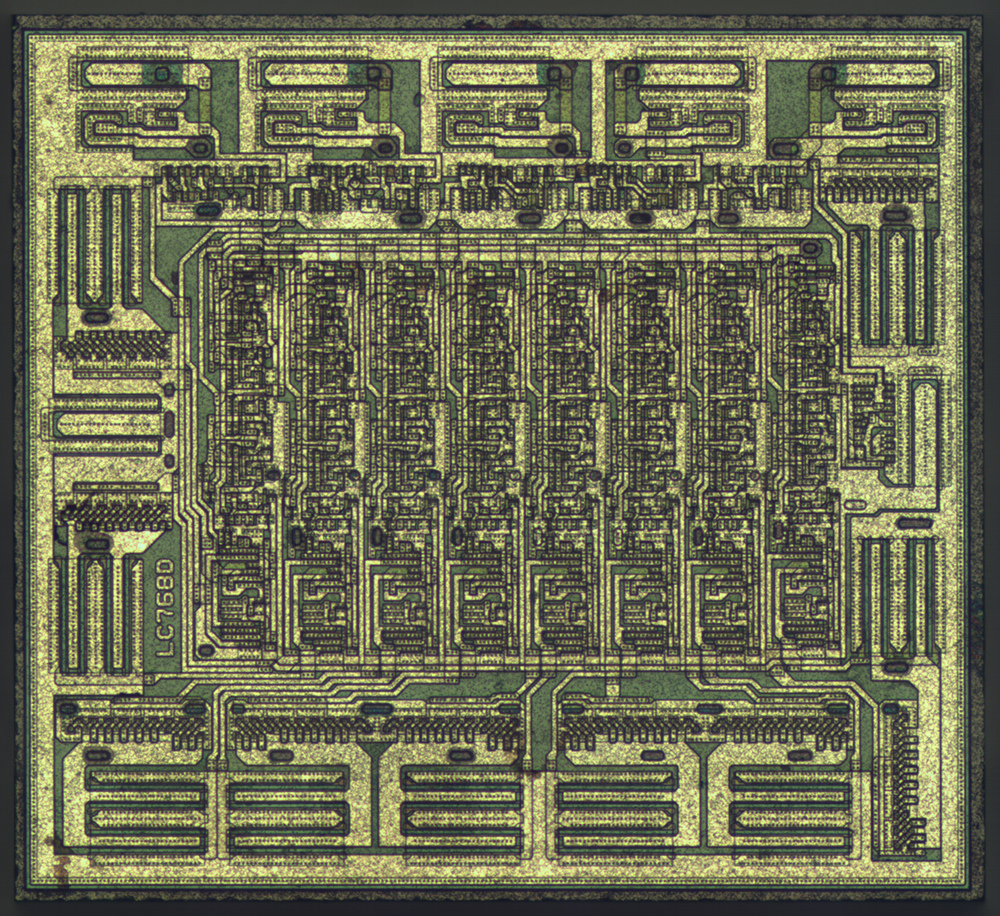
Polysilicon level:
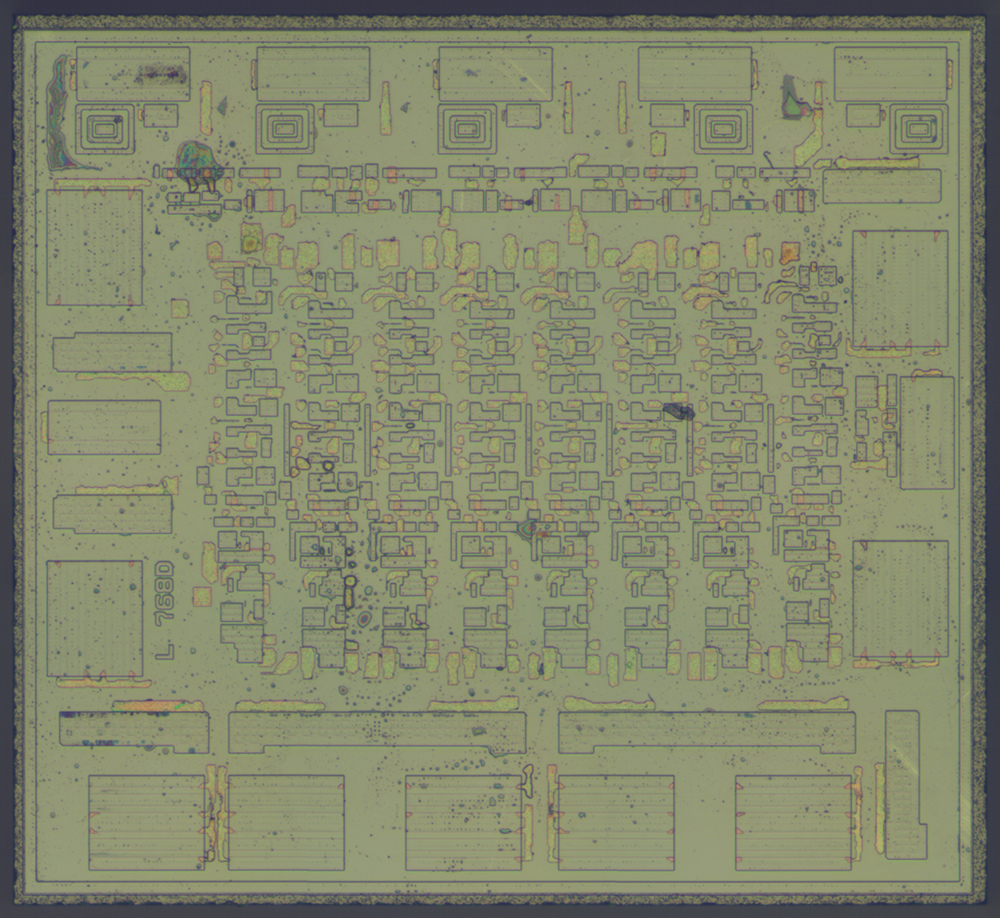
September 14, 2013
Fairchild 74VHC595 : weekend die-shot
Fairchild 74VHC595 - standard logic chip, 8-bit shift register. You can compare it to OnSemi 74HC595.Die size 800x690 µm. 800nm manufacturing technology.
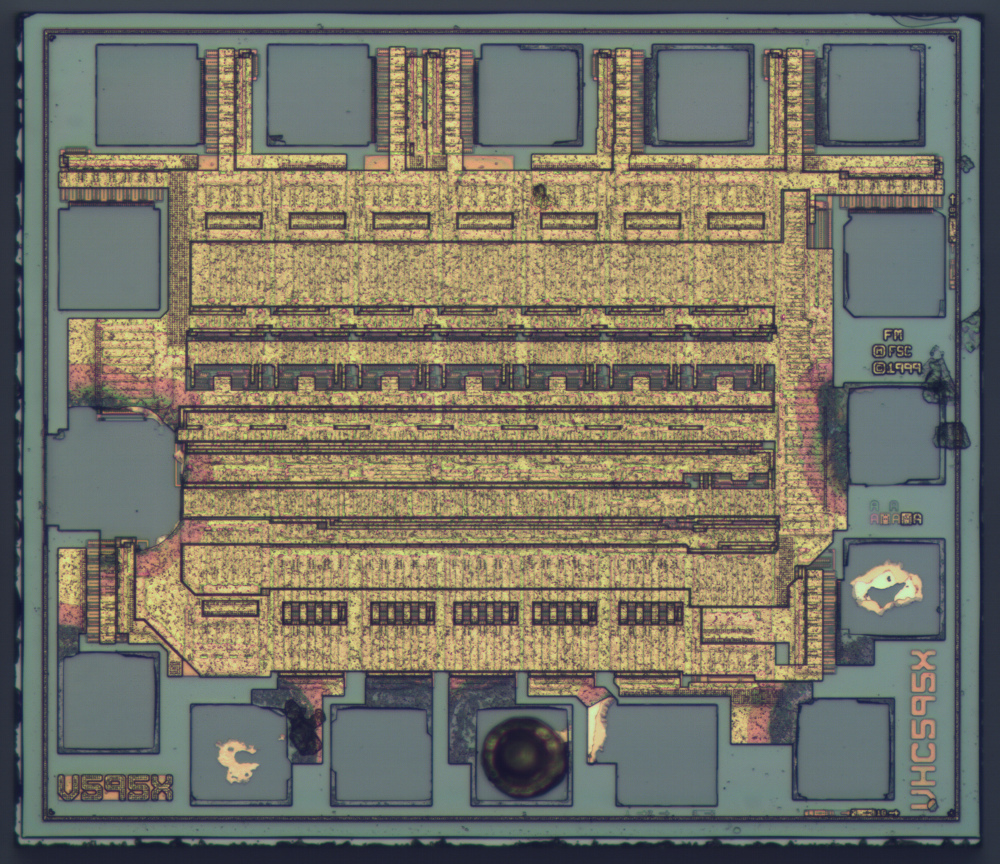
Polysilicon level:
